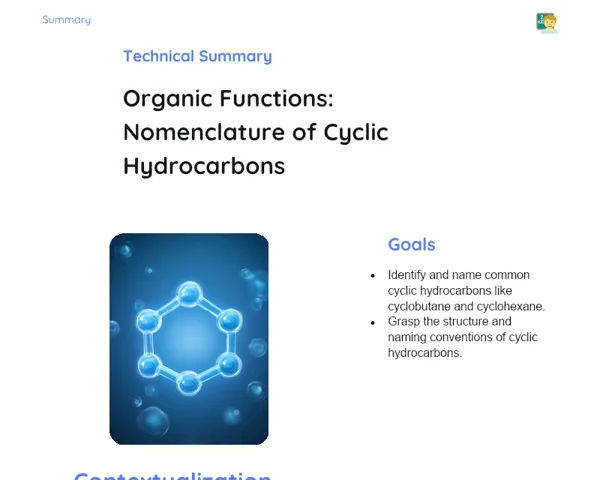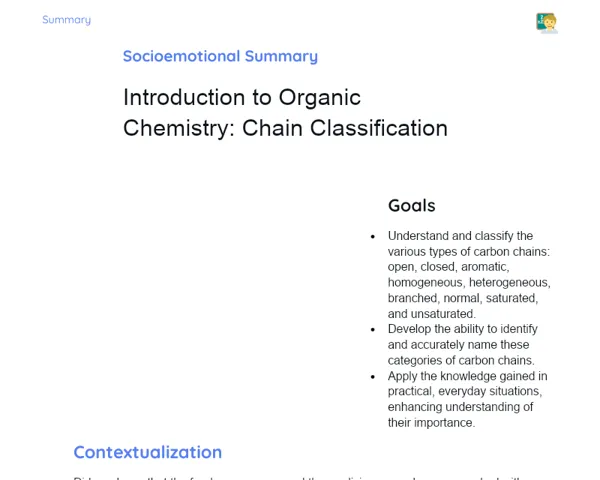Goals
1. Differentiate between homogeneous and heterogeneous mixtures.
2. Identify everyday examples of homogeneous and heterogeneous mixtures.
3. Recognize the role of mixtures in industries and work environments.
4. Enhance observational and analytical skills through real-life examples.
Contextualization
Mixtures are an integral part of our everyday life, often unnoticed. From the air we breathe and the fuel that powers our vehicles to the food we eat, grasping the nature of these mixtures is crucial. Understanding how to differentiate between homogeneous and heterogeneous mixtures aids in fields like manufacturing and quality control of products we encounter daily. A noteworthy example is the separation of oil and water in industrial settings, where recognizing the mixture type plays a significant role in ensuring process effectiveness.
Subject Relevance
To Remember!
Homogeneous Mixtures
Homogeneous mixtures are those where the components are not visible to the naked eye and exist as a single phase. Common examples include soft drinks and sterilized medical solutions. Their consistent nature is critical in several industrial and laboratory contexts.
-
Definition: Mixtures where components aren’t separately distinguishable and exist as one phase.
-
Examples: Soft drinks, saltwater, and various metal alloys.
-
Importance: Essential in industries and labs where uniformity is vital, such as in medicine and food production.
Heterogeneous Mixtures
Heterogeneous mixtures are those where the components are distinct and can be seen separately, exhibiting two or more phases. Examples include salad dressings and concrete. These mixtures are vital for processes needing component separation, such as recycling and waste management.
-
Definition: Mixtures with visibly distinguishable components divided into two or more phases.
-
Examples: Oil and water, sand mixed with metal filings, and concrete.
-
Importance: Essential for component separation in recycling and waste management processes.
Separation Methods for Mixtures
Separation methods are techniques used to isolate the individual components of a mixture. These techniques depend on the characteristics of the mixture and include filtration, decantation, and evaporation. They are crucial in laboratories and industries for purifying and analyzing substances.
-
Filtration: A technique for separating solids from liquids in heterogeneous mixtures.
-
Decantation: A method for separating immiscible liquids or solids from liquids based on density differences.
-
Evaporation: A separation process that involves vaporizing the solvent to leave behind the solute.
Practical Applications
-
In the pharmaceutical sector, the capability to create and separate homogeneous mixtures is vital for producing reliable and effective medications.
-
In environmental engineering, efficiently separating heterogeneous mixtures is key for effective wastewater treatment and material recycling.
-
In the food industry, understanding the distinctions between homogeneous and heterogeneous mixtures is paramount to maintaining the quality and safety of food products, especially in beverages and food processing.
Key Terms
-
Homogeneous Mixture: A mixture where the components cannot be distinguished by the naked eye, existing in one phase.
-
Heterogeneous Mixture: A mixture where different components are visibly distinct, existing in two or more phases.
-
Filtration: A method that uses a filter to separate solids from liquids in heterogeneous mixtures.
-
Decantation: A technique that utilizes density differences to separate immiscible liquids or solids from liquids.
-
Evaporation: A process wherein the solvent is vaporized, leaving behind the solute.
Questions for Reflections
-
How might your ability to differentiate between homogeneous and heterogeneous mixtures impact your daily life and future career?
-
In which ways are mixture separation techniques applied across industries, and how do they influence the quality of the products we consume?
-
Why is understanding mixture characteristics crucial for developing innovative solutions in fields like environmental engineering and pharmaceuticals?
Practical Challenge: Separating Mixtures at Home
This mini-challenge aims to reinforce the understanding of homogeneous and heterogeneous mixtures through a practical activity that can be easily conducted at home.
Instructions
-
Gather the following materials: water, oil, salt, a spoon, two clear cups, and a coffee filter.
-
In one cup, mix water and salt until the salt is thoroughly dissolved. Note the characteristics of this mixture.
-
In the other cup, combine water and oil, then observe and note the characteristics of this mixture.
-
Use the coffee filter to separate the saltwater mixture and observe the results.
-
Separate the water and oil mixture via decantation (let the mixture sit until oil and water clearly separate into two layers).
-
Record your observations and comparisons of the separation methods used.



